Page 1
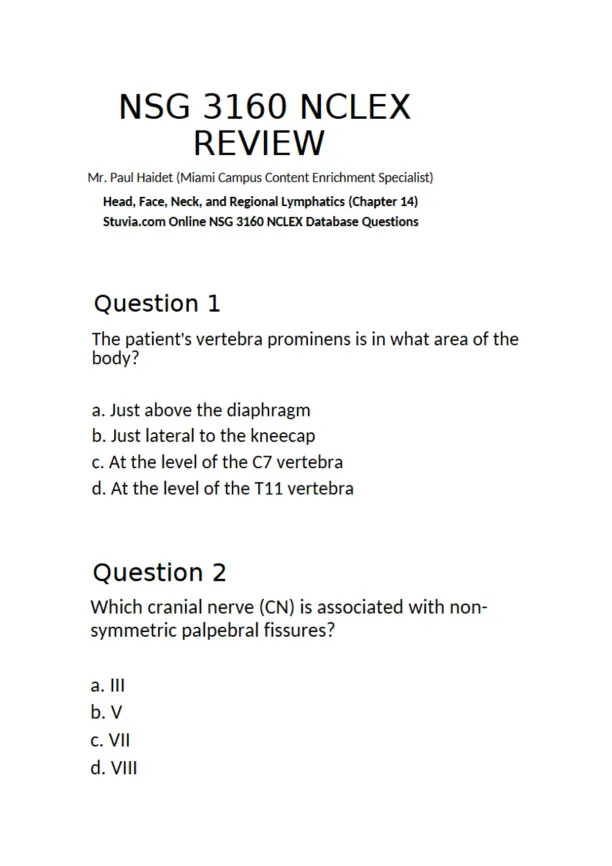
Loading page image...
Page 2
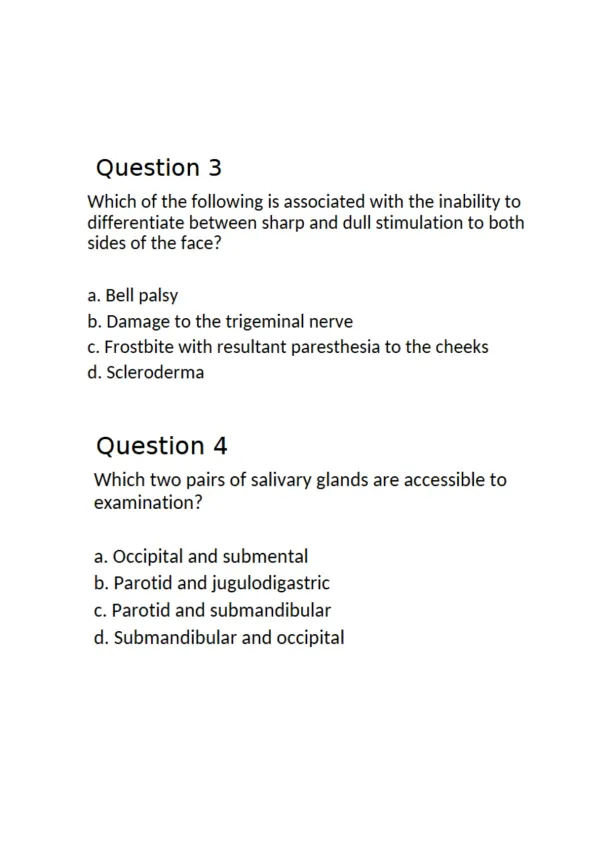
Loading page image...
Page 3
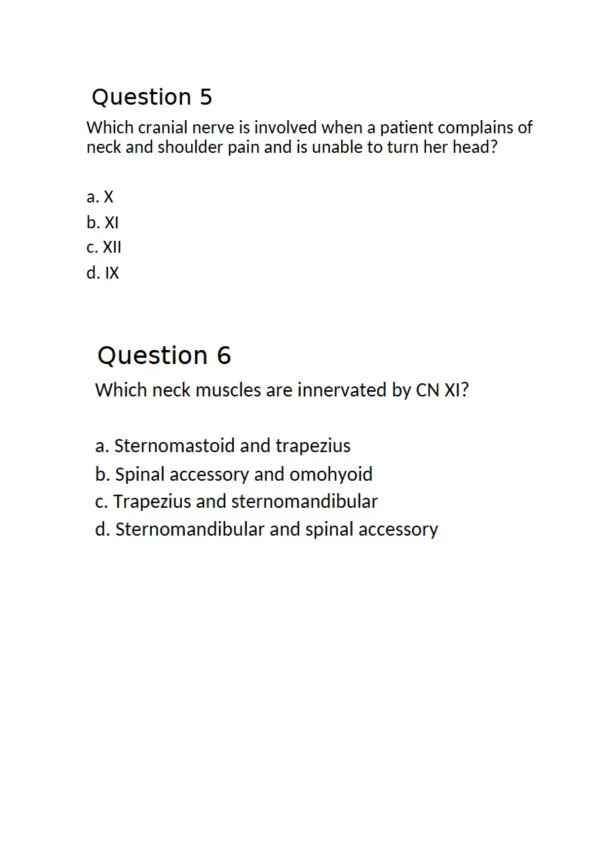
Loading page image...
Page 4
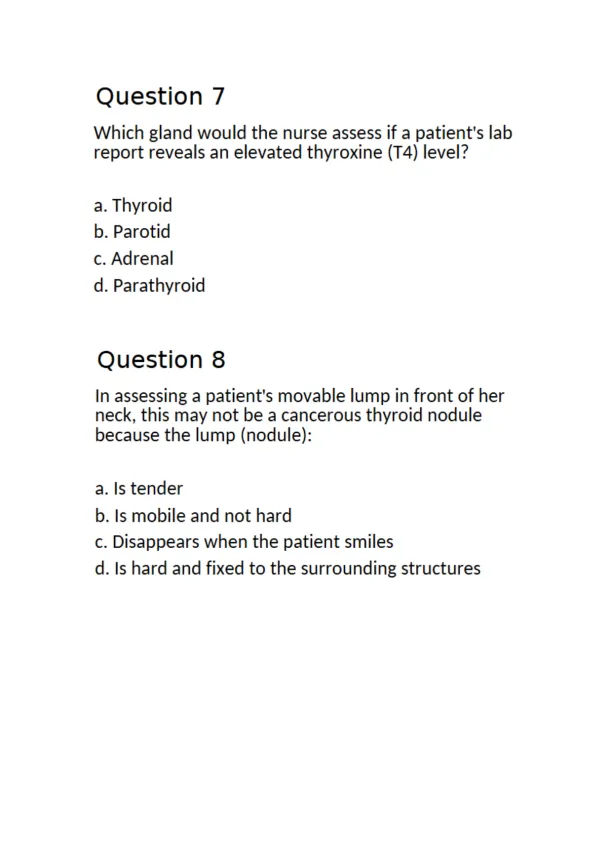
Loading page image...
Page 5
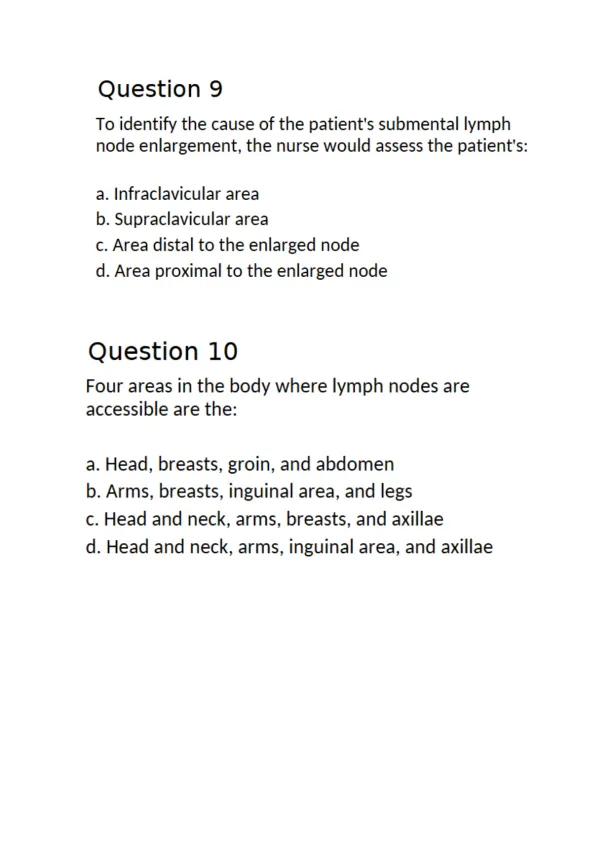
Loading page image...
This NCLEX-style quiz reviews head, neck, and cranial nerve anatomy, focusing on landmarks, nerve function, and physical assessment—ideal for nursing students preparing for neuro and head-to-toe assessments on the NCLEX-RN exam.
Loading page image...
Loading page image...
Loading page image...
Loading page image...
Loading page image...
This document has 16 pages. Sign in to access the full document!